Advances in lens design and technology have meant that the coupling and electrical communications between the camera and lens have been improved over time, these design changes can be categorised into the lens types listed below.
Most of the lens types shown apply only to Nikon F-mount cameras (film and digital SLR cameras) with the exception of the E-type lens technology which is also used in Z-mount lenses introduced in 2018 for Z-mount Mirrorless cameras.
Electronic lens types
Mechanical (manual) focus lens types (AI-S, AI, non-AI)
To check if a lens is compatible with a DSLR camera please click here.
Electronic Lens Types
Electronic lens types are identified by the presence of electronic CPU contacts (or more information on CPU contacts, please click here).
E-Type

E-type was introduced in 2016.
An electromagnetic diaphragm mechanism is incorporated inside the body of these lenses and controlled via electronic signals from the camera body. This gives you incredibly accurate aperture control, even when a teleconverter is being used with a super-telephoto lens. This is an advancement over the conventional D/G type lenses where the diaphragm blades are operated by mechanical linkage levers.
E-type lenses are not compatible with the following cameras as they do not communicate aperture information electronically from the camera body:
Nikon D2-series, D1-series, D200, D100, D90, D80, D70-series, D60, D50, D40-series, D3000, and film SLR cameras.
* Do not confuse E type lenses with 1980's Series-E lenses, which were manually controlled.
G-Type

G-type was introduced in 2000.
G-type lenses differ from previous lenses in that they do not have an aperture ring to control the lens aperture. Most cameras released in recent years have the ability to control the lens aperture electronically from the camera body and so do not require a lens with an aperture ring. AF-G lenses benefit from being lighter, smaller and less expensive. The reduced cost and size make these lenses ideal for entry-level users who prefer the camera to automatically select the correct aperture most of the time. It also brings the same size and cost reduction benefits to lenses designed for advanced users, including professional lenses. Note that older DSLR cameras do require an aperture ring as they don't have the technology to control the aperture electronically.
D-Type
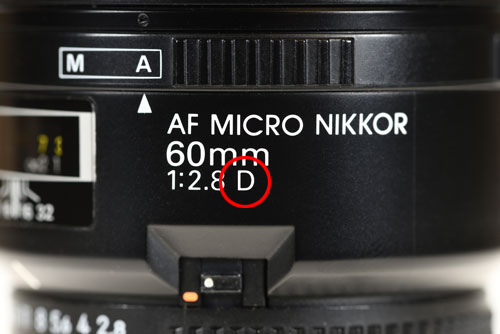
D-type was introduced in 1996.
D type lenses contained an encoding microchip that transmits focusing distance information to the camera body. This information is used to enhance the accuracy of the camera's exposure and flash metering systems. Cameras with advanced 3D matrix metering systems require D type lenses to take full advantage of this technology. All current Nikon autofocus lenses transmit distance information. D-type lenses have the designation 'D' marked on the lens as illustrated in the image above.
Mechanical Lens Types
With mechanical lenses, the name of the lens type was not written on the lens itself. The difference between lens types is indicated by physical differences between the lenses as indicated below.
AI-S Type
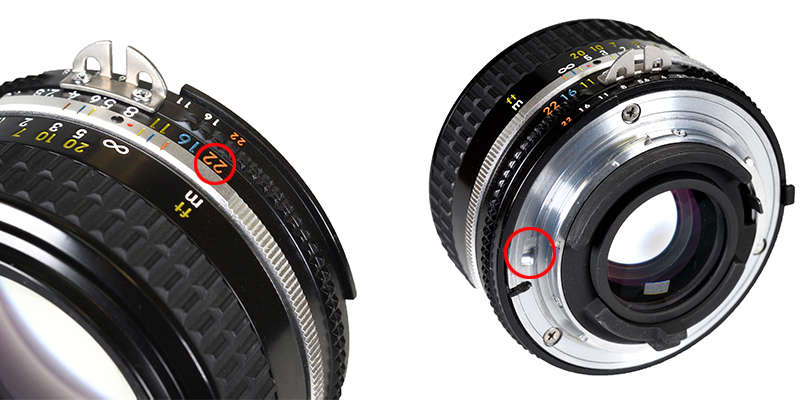
AI-S was introduced in 1981.
The lens mount is nearly the same as an AI lens except there is a cut out in the metal bayonet mount as shown above. The AI-S lens was created when the aperture mechanism of the AI lens was changed to allow automatic aperture control, with cameras such as the FA. This modification means that the aperture increments of the AI-S lens can be controlled more precisely by the camera.
AI-Type
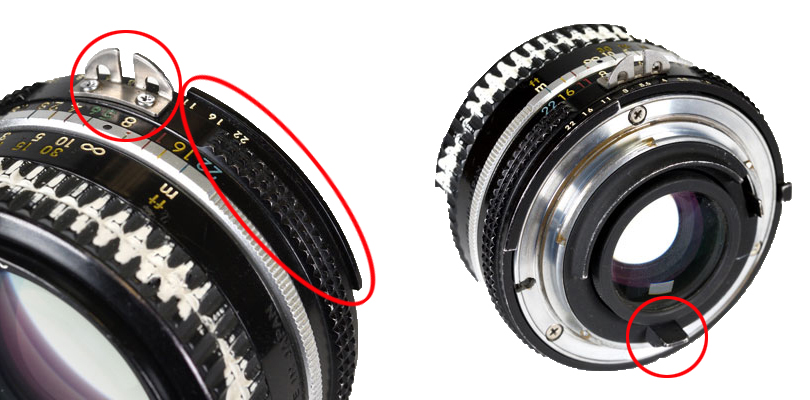
AI was introduced in 1977.
AI means auto-indexing and the protruding ridge indicated on the back of the lens is for meter coupling, it engages the ring around the camera mount to couple the lens aperture and camera. The camera also understands the maximum aperture for the camera metering system. The smaller aperture numbers shown on the lens can be seen by the photographer through the camera viewfinder.
Note that the lens shown has the metal plate for non-AI lenses as AI lenses are backward compatible with non-AI lenses.
Non-AI Type
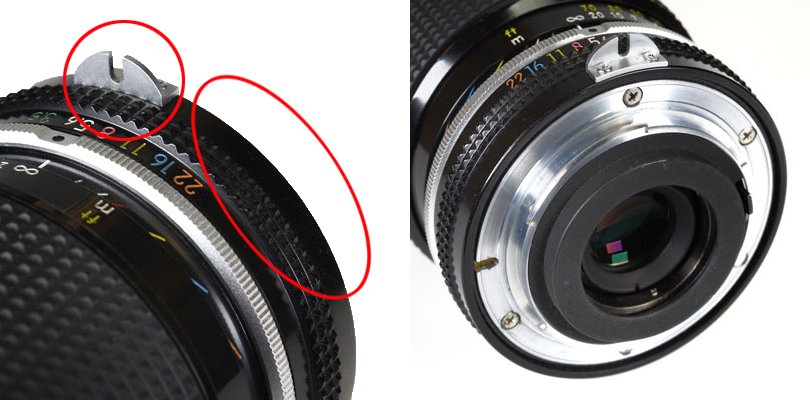
Non-AI was introduced in 1959
The pin on the camera ring around the mount slots into the metal plate on the lens (secured by two screws) to couple the lens aperture to the camera. Also indicated above is the level surface on the back of the aperture ring, this changes with the introduction of AI lenses.
Some cameras allow non-AI lenses to be used if the metering coupling lever is disengaged such as the Nikon Df, FM, FE, EL2, F3, F4 and Nikkormat FT3.
Using AI-S, AI and non-AI lenses with Digital SLR cameras
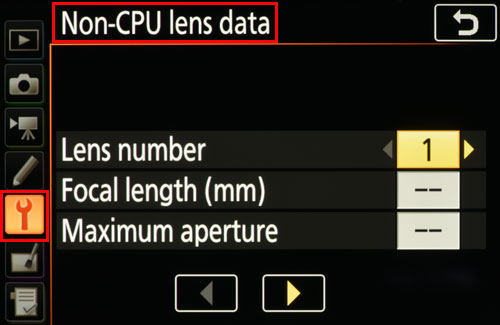
These older lenses are non-CPU, in other words, there is no electrical communication between the lens and camera. However, some Nikon Digital SLR cameras allow you to add Non-CPU lens data manually into the camera menu so that the camera understands which lens is attached and will meter and set flash accordingly. For each lens, enter the Focal Length (mm) and Maximum Aperture with the Lens Number as up to 9 lenses can be registered. Each time you change the lens you will need to select it in the menu.